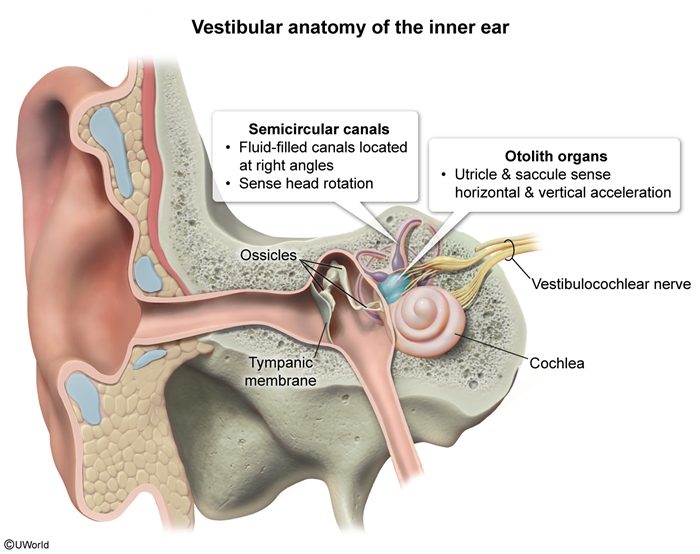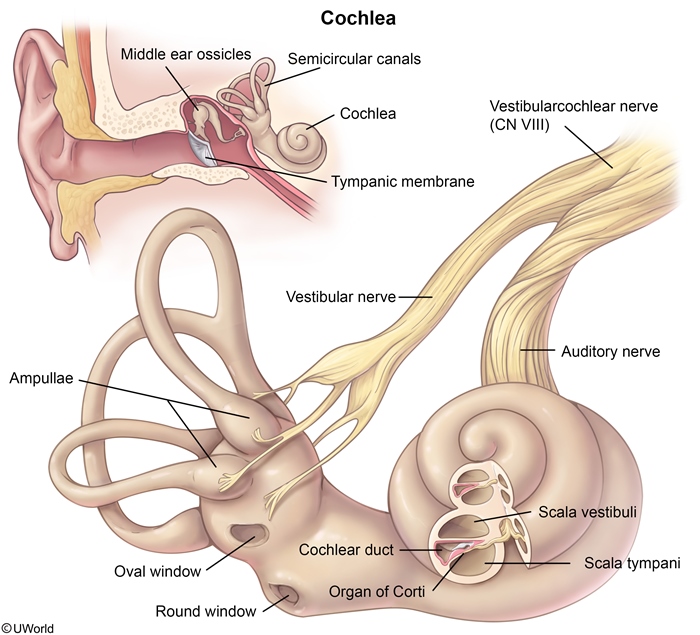Vertigo
Article Sections
Introduction
Vertigo is a sensation of motion when no motion is present or an exaggerated sense of motion for a given bodily movement; it is often described as a spinning, whirling, or tilting sensation. Peripheral vertigo arises from pathologies affecting the vestibular system in the inner ear, whereas central vertigo is related to central nervous system (CNS) abnormalities, primarily affecting the brainstem or cerebellum. This distinction is crucial, as the underlying conditions range from benign to potentially life-threatening, requiring different diagnostic and therapeutic approaches.
Pathophysiology
Vertigo arises from disruptions in the vestibular system, responsible for balance and spatial orientation. The vestibular system also plays an important role in maintaining gaze as the head moves through the vestibuloocular reflex, which is why nystagmus often accompanies vertigo. The vestibular system starts with detection of the body's sense of balance in the structures of the inner ear (
Continue Learning with UWorld
Get the full Vertigo article plus rich visuals, real-world cases, and in-depth insights from medical experts, all available through the UWorld Medical Library.
Figures


